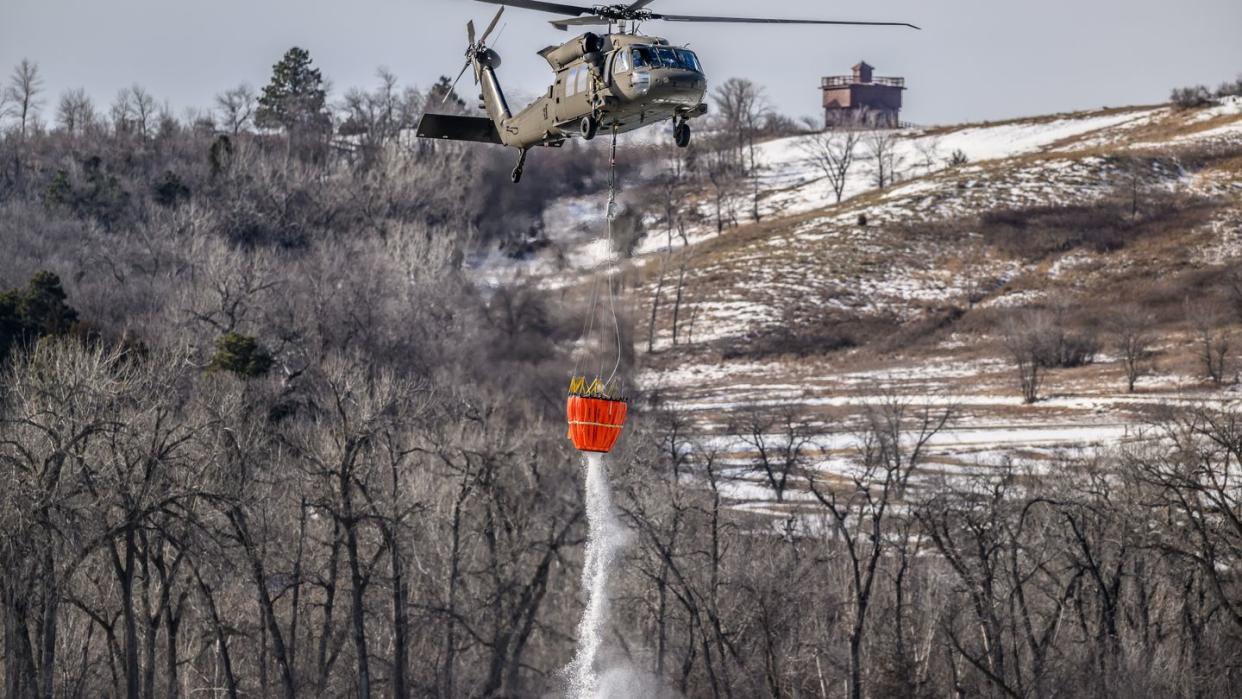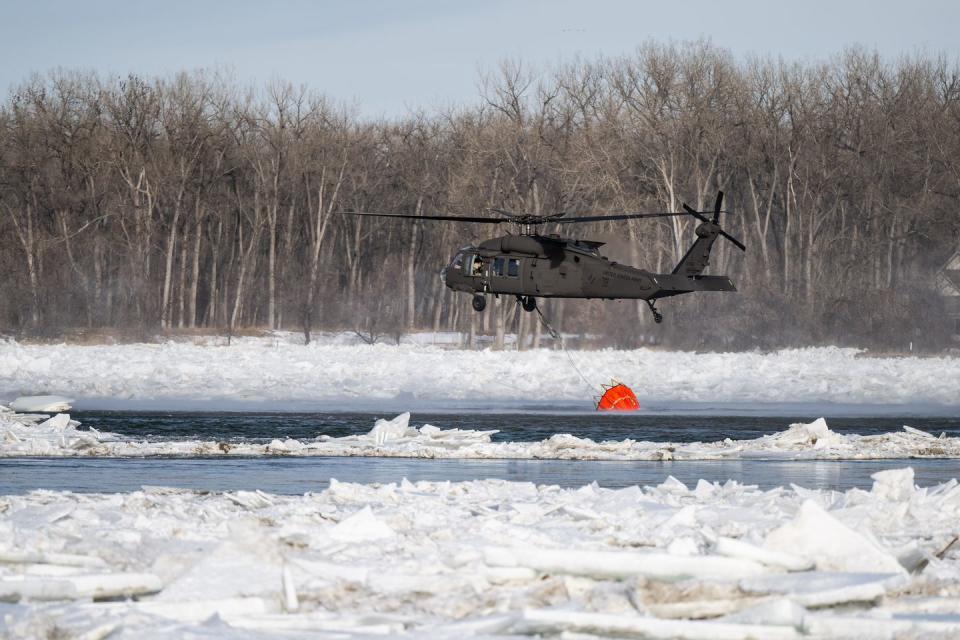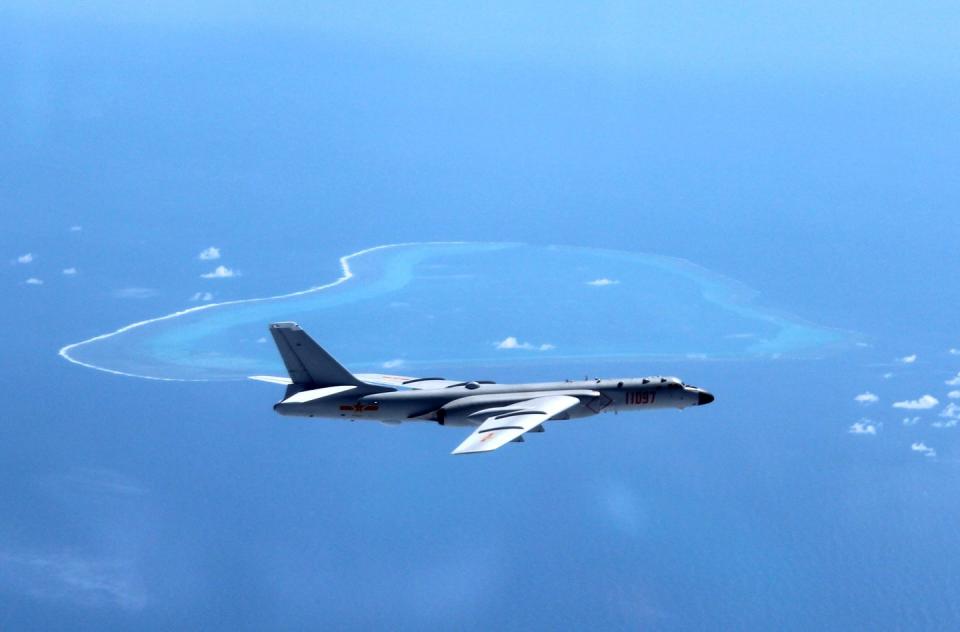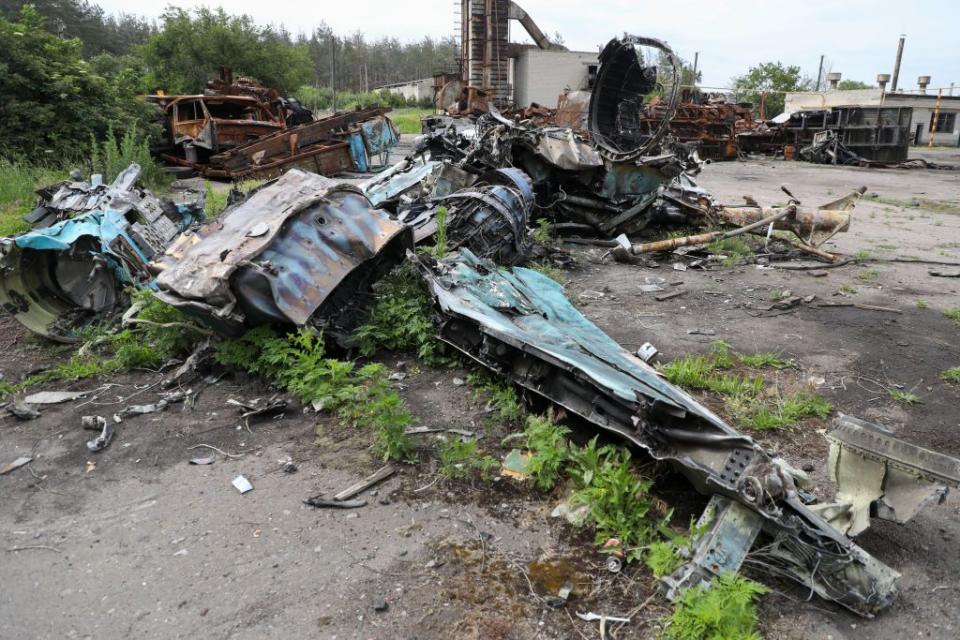Helicopters Just Smashed River Ice with Piledrivers of Water

The North Dakota National Guard was called out to deal with an ice jam on the Missouri River.
Ice jams can cause rivers to rise, causing local flooding.
The Guard used Black Hawk helicopters with water buckets to break up the jam, saving the nearby community from the threat of flooding.
Assault helicopters from the North Dakota National Guard were called out to deal with an unusual threat: a buildup of river ice. In response, the Guard called out two UH-60 Black Hawk helicopters, which took turns dumping more than two tons of water on the ice until it broke free. While this operation was carried out entirely without explosives, there are plenty of instances outside the U.S. in which governments are all too happy to simply bomb Mother Nature into submission.
Flood Risk

In late February, ice jams began to form in the Missouri River near the city of Bismarck, North Dakota. Ice jams are caused by chunks of ice blocking the flow of a river. This causes icy water to build up behind the jam that could spill the banks of a river and flood nearby communities. On February 29, the river exceeded the minor flood stage, rising to a height of 14.92 feet.
The flooding was considered serious enough that the state began working with the U.S. Army Corps of Engineers to lower ice levels and get the river moving again. As a result, two UH-60 Black Hawk helicopters of the North Dakota National Guard were dispatched to the flood zone. Each carried a “Bambi Bucket”—a collapsible bucket slung underneath a Black Hawk capable of carrying up to 660 gallons of water. The buckets are typically used for firefighting, with helicopters dipping the buckets into a body of water from a hover position, scooping up a bucketful, and then releasing the water over a wildfire.
Water weighs eight pounds per gallon, so every time a helicopter with a Bambi Bucket drops its load, it releases up to 5,280 pounds of water at once. The North Dakota National Guard hoped that repeatedly dropping two and a half tons of water on the jam would act like a watery piledriver, pummeling the accumulated ice and getting the river flowing again.
It worked. According to the North Dakota National Guard, a “20 by 20-foot section of ice was dislodged on the first pass. Around 6 p.m., progress was made, and the ice began to move down the river. One hundred and eighteen buckets dropped over 70,000 gallons of water in 4 hours.” As of Friday, March 1, the Missouri River is moving on its own again and the emergency has passed.
They do it differently in Russia and China

Ice jams are an issue in many countries, especially those in the northern latitudes, including China and Russia. Both feature vast swathes of territory with rivers that freeze and governments that take aggressive actions to fix problems like these. The result: bombs instead of Bambi Buckets.
In 2010, China’s People’s Liberation Army Air Force used H-6 bombers to break up ice jams on the Yellow River. Six H-6K strategic bombers from the 28th Air Regiment, each carrying eight conventional high explosive bombs, made bombing runs on the river that is often considered the cradle of Chinese civilization. Although the H-6’s basic design dates to the 1950s and it is vulnerable on today’s battlefield, it suited ice-breaking quite well and the Chinese government considered the mission a success. The method was repeated in 2014.

In 2016, the Russian Aerospace Forces bombed the Sukhona River, located approximately 250 miles north of Moscow. Two Su-34 “Fullback” tactical bombers from Voronezh Malshevo Air Base carried out the mission. The bombing was also considered a success. Russia might have more difficulty executing another strike today, however—since the country’s 2022 invasion of Ukraine, it has lost roughly twenty percent of its Su-34 fleet to enemy fire.
You Might Also Like

